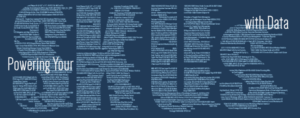Powering your SKU’s with Data
Automated Statistical Analysis
Drives Inventory Management
Featured Story


Automated statistical analysis drives inventory management
By Thomas R. Willemain, Ph.D.
Inventory managers struggle with the conflicting priorities of customer satisfaction vs. cost control. Learn how to harness customer demand data to craft optimal inventory policies:
- Measure current inventory policy performance – including service levels, fill rates, inventory turns, and ordering costs.
- Identify improvement goals: Assess tradeoffs between inventory investment and the risk of running out. Where are you over- and under-stocked, and how can you do better?
- Find your optimal balance point, setting reorder points and order quantities that will achieve the results you require.
- Then make it so.
Get the Article!
Pursuing best practices in demand planning, forecasting and inventory optimization

Make AI-Driven Inventory Optimization an Ally for Your Organization
In this blog, we will explore how organizations can achieve exceptional efficiency and accuracy with AI-driven inventory optimization. Traditional inventory management methods often fall short due to their reactive nature and reliance on manual processes. Maintaining optimal inventory levels is fundamental for meeting customer demand while minimizing costs. The introduction of AI-driven inventory optimization can significantly reduce the burden of manual processes, providing relief to supply chain managers from tedious tasks.

Smart Software Announces Next-Generation Patent
Smart Software is pleased to announce the award of US Patent 11,656,887. The patent directs “technical solutions for analyzing historical demand data of resources in a technology platform to facilitate management of an automated process in the platform.

The Cost of Spreadsheet Planning
Companies that depend on spreadsheets for demand planning, forecasting, and inventory management are often constrained by the spreadsheet’s inherent limitations. This post examines the drawbacks of traditional inventory management approaches caused by spreadsheets and their associated costs, contrasting these with the significant benefits gained from embracing state-of-the-art planning technologies.
